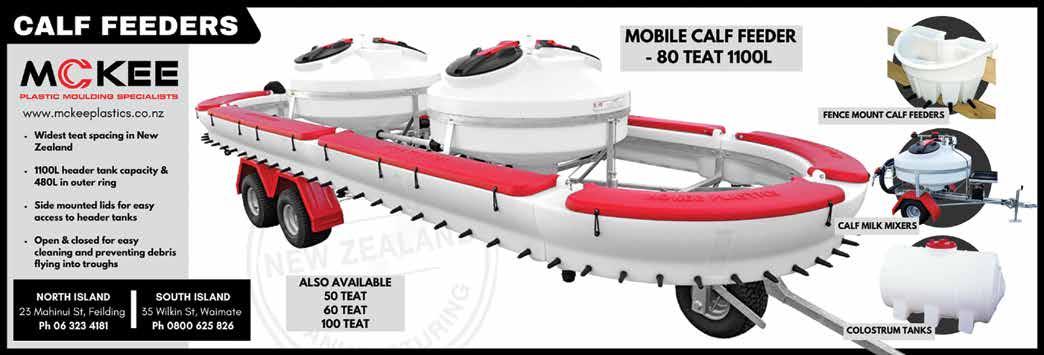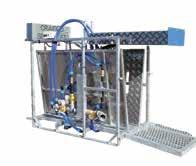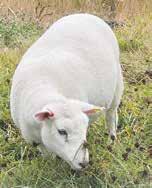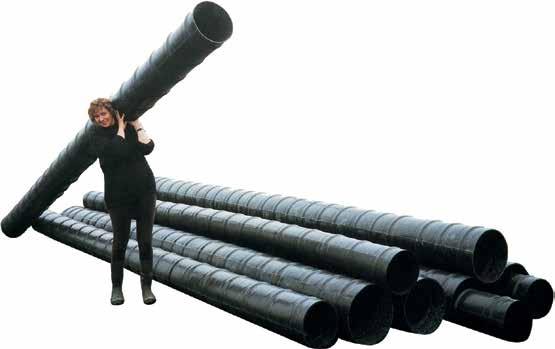






BEEF+LAMB NZ is calling on the Government to take urgent steps to stop regional councils from continuing to implement the existing National Policy Statement on Freshwater.
B+LNZ’s general manager for Policy and Advocacy, Dave Harrison, told a roadshow meeting at Oxford that while the Government intends changing the National Policy Statement in about a year, the regional councils in the meantime have no choice but to continue to implement the regulations already on the books.
“So, we have a government that is saying ‘look actually fellas, you should probably hit pause on this because we’re going to change everything and you’re just going to have to do it again, and that doesn’t make a lot of sense’.
“And the councils are saying, ‘well we kind of can’t, because the law requires us to be implementing what’s on the statute books, so we’re stuck between a rock and a hard place’.”
The Government needed to fix it to prevent the adverse impacts of the current rules becoming ingrained in the regional planning processes in the longer term, says Harrison.
He says the issue was one of three big environmental matters that are now live or soon would be, and he was asking farmers attending the roadshow for their input into how they would like B+LNZ to tackle them.
Another was the Government’s intention to replace all the RMA framework.
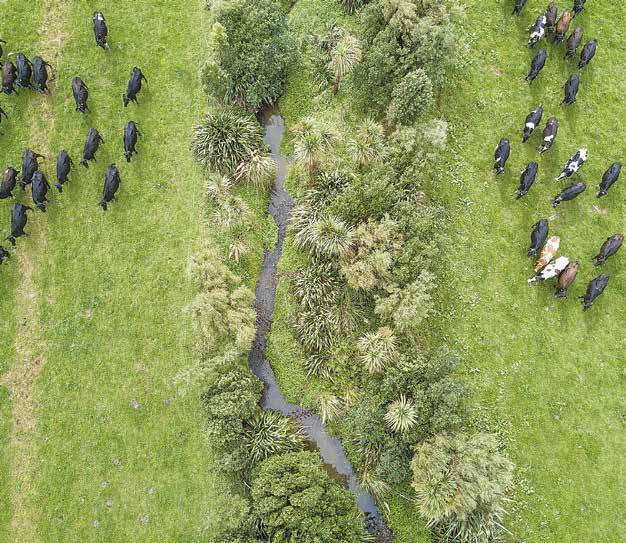
It had already made some “quick gains” such as enabling fast tracking of consenting, and changes now in front of Parliament would also take away some “real friction points for farmers” such as waterway stock exclusion and low slope rules.
However, it would still take a couple of years to amend the whole of the regulatory framework.
Harrison says it was in no-one’s interest for policy to swing back and forth every three, six, or nine years and B+LNZ was calling for something that
was enduring so farmers could make plans and know what the framework would be, going forward.
B+LNZ was also asking for a review of the national bottom lines for freshwater, which establish limits on the maximum amounts of contaminants
in a waterway, such as suspended sediment and E. coli.
If a waterway had more sediment than allowed by the national bottom line, the regional council had to set rules and a time frame for bringing it into compliance again – or, said Harrison, potentially bringing it into a state of compliance where it had never been before.
B+LNZ commissioned an independent report into the methodology used to develop the bottom lines and it identified some significant issues. Harrison notes that the first flaw was that the data sets did not align. Data on fish stocks came from the 1970s up to today, but the data on sediment levels came only from modelled and current data.
Harrison said that was then used to assume the impact that sediment had on fish stocks, but the correlation was not established, since there was no sediment data from the 1970s. The report also questioned whether relevant species of fish were being counted.
Another issue was that large numbers of native catchments, such as in the DoC estate, do not meet the bottom lines despite being untouched by agriculture.
Thirty eight per cent of catchments, if agriculture was removed and they reverted to a natural state, also would not meet the standard, says Harrison. Attempting to implement the bottom lines would be impossible and an unacceptable cost to the sector and to the country, he warns.


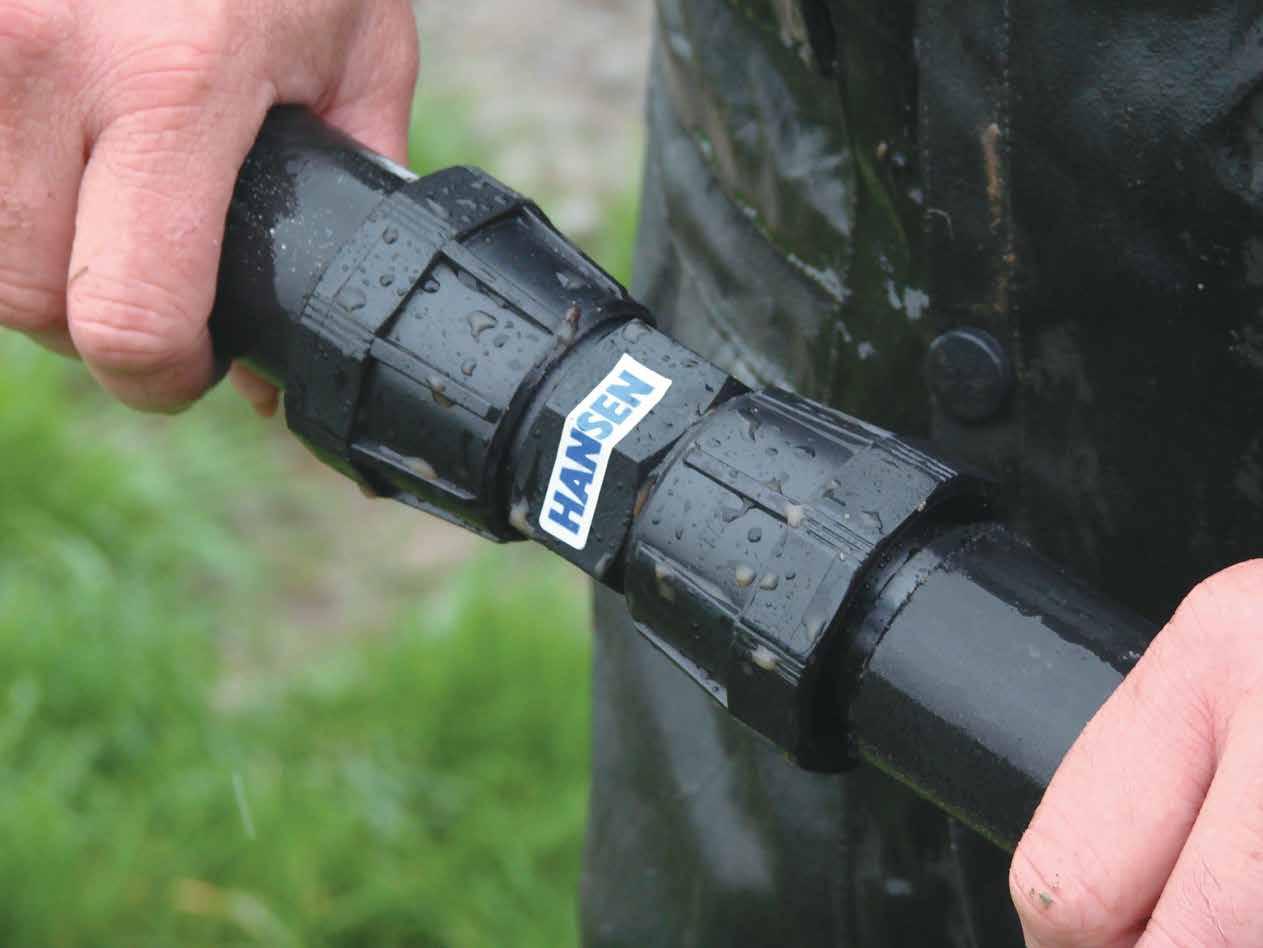
“When kiwi Bert Hansen decided to invent a pipe fitting for farmers to join alkathene poly pipe together, his main focus was to keep it simple and make it last!
50 years on, and with over 100 million fittings in the ground, Bert’s pipe fittings are still simple to use, unquestionably time tested, but most importantly trusted by kiwi farmers”
Don’t just ask for a pipe fitting, ask for a Hansen fitting! www.hansenproducts.co.nz

NEWS 1-12
AGRIBUSINESS 13
HOUND, EDNA 14
CONTACTS 14
OPINION 14-16
MANAGEMENT 18-19
ANIMAL HEALTH 20
MACHINERY AND PRODUCTS 21-22
RURAL TRADER 22-23
HEAD OFFICE
Lower Ground Floor, 29 Northcroft Street, Takapuna, Auckland 0622
Phone: 09-307 0399
Fax: 09-307 0122
POSTAL ADDRESS
PO Box 331100, Takapuna, Auckland 0740
Published by: Rural News Group
Printed by: Inkwise NZ Ltd
CONTACTS
Editorial: editor@ruralnews.co.nz
Advertising material: davef@ruralnews.co.nz
Rural News online: www.ruralnews.co.nz
Subscriptions: subsrndn@ruralnews.co.nz
SUDESH KISSUN sudeshk@ruralnews.co.nz
FARMER-OWNED WOOL fibre and carpet producer Wools of New Zealand hopes that its new partnership with a major Chinese carpet and rug manufacturer will help combat counterfeiters in the global market and highlight the prestige of New Zealand wool to Chinese consumers.
Wool products falsely claiming to use NZ wool and carrying the Fern logo trademarked by the company have been found in the past around the world, including upholstery in Scandinavia and on carpets in the UK.
Wools of NZ chief executive John McWhirter told Rural News that they have found similar Fern symbols that resemble its own on wool carpets and have taken legal action to stop the misleading of consumers.
“This highlights the importance of an international team and partnerships. If we are not there, we cannot see it to stop it.”
Last month’s agreement allows Yangxin Ruixin to use Wools of New Zealand branding on its products as a mark of provenance and integrity.
Founded in 1998 and located in the Shandong province, Yangxin Ruixin sells its products under the Silktouch brand in China, while exporting under the Ruixin brand. It produces a range of types of carpets and rugs for the commercial, hospitality and residential markets and operates the largest hand-tufted factory in China, with 3000 employees.
While Wools of New Zealand already has an extensive trade partner network internationally, this is the first arrangement the farmer-owned company has entered with a Chinese manufacturer to produce branded carpets.
“We already work with a New Zealand exporter to China and supply a
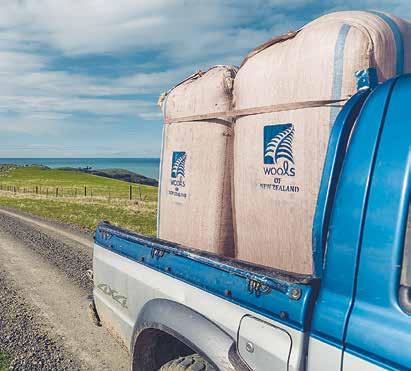
yarn spinner who sells our farmers’ product into a range of companies in the Chinese market,” said McWhirter.
“However, this is our first agreement with a Chinese company producing branded products. Yangxin Ruixin will be able to use the Wools of New Zealand logo on their products that contain at least 60% Wools of New Zealand-supplied fibre.”
McWhirter says an advantage of the agreement is the ability of Yangxin Ruixin to monitor any Chinese manufacturers falsely claiming to be using Wools of New Zealand wool.
“Counterfeit wool claiming to be New Zealand wool does get sold. We have acted in the past against companies using our logo without permission.
“However, it is hard for us to police that in China, so it is very good to have a partner and ‘eyes in the market’ there. Working with Yangxin Ruixin means they have a brand-authenticated product and an interest in protecting
the brand.”
McWhirter says they see ‘New Zealand Wool’ carpets across the world that on inspection contain fibres and contamination that does not originate in New Zealand.
“The temptation for spinners in China, India, and Europe to dilute New Zealand wool with cheaper fibre, to meet price points from retailers is immense.
“This is why ingredient branding is so critical to be able to ensure consumers are not sold counterfeit wool products. We talk about false claims globally; no different to what happened to the Kiwifruit industry, an issue solved with the Zespri brand. Without a protected brand on our wool, we have no way to stop false claims.
“The ‘Fernmark’ symbol is owned and protected by Wools of New Zealand for use on wool textiles around the globe. We have invested heavily in copyright over the last 40 years and still do today.”
THE CHINESE carpet market is worth US$4.8 billion.
And carpets and rugs made from NZ wool are well regarded in the market.
Wools of NZ chief executive John McWhirter says it is rightly valued for its ability to create cleaner and brighter products and for its superior yield through manufacturing.
“As a brand, Wools of New Zealand is held in high regard for its purity and global presence, and being farmer owned, gives our brand unrivalled integrity.”
He expects benefits from sales in the Chinese market to flow back to farmers over time.
“Having a flagship partner that has invested in the Wools of New Zealand brand calls into question other carpet manufacturers that falsely claim to use New Zealand wool which is one of the limiting factors on demand.
“We work hard to protect the reputation of New Zealand wool by ensuring branded products are true to provenance.”
McWhirter points out that Yangxin Ruixin is not a new user of New Zealand wool. “The Wools of New Zealand brand partnership ensures a minimum percentage of our fibre is used within the products (20% more than previously) and, more importantly, means we can work together to grow both businesses, taking market share from both plastic and non-New Zealand wool.
“The partnership is about adding value as well as increased volume. The extra wool required to meet our brand standard is immediately replacing plastic fibre.”

Visit agrizero.nz/contact or scan the QR code to register your interest.
OUTGOING FON-
TERRA director Leonie
Guiney is satisfied that she’s leaving the farmer co-operative with a stronger balance sheet.
Guiney, an advocate of the co-operative model, says a strong balance sheet has been one of her core focuses during her nine-year board membership. She believes that after “over-reaching” in 2017, Fonterra now has a sound balance sheet, with the board and management working very well together, thanks to the leadership of chair Peter McBride.
Guiney told Rural News that a strong balance sheet is the ultimate risk management tool against shocks. At the same time, it can help the business grow.
“The balance sheet being stronger is about resilience to shocks that a business that exports like we do is exposed to,” says
FONTERRA CHAIRMAN Peter McBride says Leonie Guiney has made a significant leadership contribution to the co-op.
“While stepping down as a director, Leonie will remain a passionate and highly valued member of our co-op,” he says.
“A hard-working director, over the years she has chaired our safety and risk committee and been a member of the audit, finance and risk; co-operative relations; and people, culture and safety committees.
“She has also been a member of the milk price panel and served on the capital structure committee and divestment review committee.
“Always generous with her time and energy, Leonie made a personal sacrifice to give back to the co-op that she loves. We cannot thank her enough. I know Kieran and the family will be glad to get that time back, but I’m sure Leonie’s leadership qualities will not be lost to our industry,’’ says McBride.
Guiney. “But it also puts us in a position to take opportunities.
“Just like a farm business that can ride the cycles with a repeatable cash surplus even in the lows, a cooperative that can do same can get stronger and keep its farmer shareholder suppliers committed.
“It also protects the future of farmers whose
investment in infrastructure are long term. Weakness begets weakness. Strength builds on itself and attracts committed supply. It matters.”
Under Fonterra’s board charter, directors can serve a maximum nine-year term. Guiney is not re-standing for election and will retire at the co-op’s annual meeting in November, to be held in
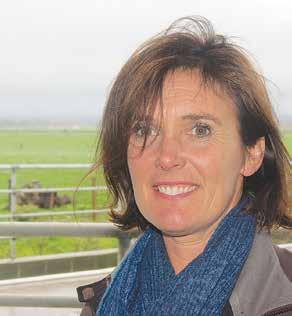
Guiney and her husband Kieran own five farms- three in Fairlie, one in Pleasant Point, and one in Rai Valley in Marlborough. The couple sold a farm to a longserving sharemilker earlier this year. Having built their business through 50/50sharemilking, they now have highly capable three 50/50 sharemilkers and two managers on their farms.
Guiney says they will
now spend more time in helping young people develop their dairy careers but isn’t ruling out future governance roles in the primary industry sector.
“I’m passionate about dairy farming and the industry and there’s no other place I want to be - because firstly, we have this fantastic climate and grass-fed system that allows us to farm profitably.
“Secondly, we have
a fantastic sharemilking system where people stat with nothing and end up owning land.
“And thirdly, we got the scale of a co-op which enable us to take on debt and risk because the co-op will prioritise the milk price.”
On challenges facing the dairy sector, Guiney says they are cyclical.
“Yes, interest rates are high relative to where they were a few years ago but not as high when compared to the 1980s and even at 12% when we started in the 2000s.”
Guiney’s says farmers must always strive for “a cash surplus business”.
“And Fonterra is an extension of our farming business and must also remain a cash surplus business with a safe balance sheet and can still significantly improve its focus on efficient use of resource.”
Her advice to farmers, especially younger farmers, is to stay engaged with the co-operative.
“My retirement from
NOMINATIONS FOR Fonterra’s director elections are open.
This year, three farmer directors retire by rotation. However, only two seats will be contested as Fonterra’s board size reduces from 11 to 9 – to
comprise of six farmer-elected and three independent directors.
As a result of these changes, at this year’s director elections, shareholders will be asked to elect two farmerelected directors.
This year, sitting directors Leonie Guiney, John Nicholls and chair Peter McBride retire by rotation. Both Nicholls and McBride have confirmed their intention to re-stand for consideration as directors.
Guiney is stepping down after serving nine years as per Fonterra’s board charter.
the board gives younger farmers the opportunity to get engaged. In the past when Fonterra faced tough issues, our farmers were upset and angry, but they stayed engaged and that helped change the co-op, for the better.
“The biggest mistake is when farmers start to think that everything is rosy and start to disengage.”
One of the biggest risks is taking the model for granted, she adds.
“The impact of shortterm thinking and supply competition leads to poor long-term outcomes for farmers.
“We can see what has happened in Australia and Europe and the meat industry in NZ where they don’t have a strong co-op.
“Among endless debates about ‘adding value’, a wise Canterbury farmer summed it up for me making the point ‘you can add value anywhere along the supply chain, it’s who captures it that matters’.
Long serving independent director, Clinton Dines has also completed the maximum nine-year term. Dines leaves the board at the annual general meeting in November, and therefore will not be replaced. McBride thanked Dines for his contributions.



TALK THE language of business when communicating the benefits of Free Trade Agreements (FTAs) – that’s the message to the Government and its officials from public and international trade law expert Sarah Salmond.
Salmond is a partner in the law company MinterEllisonRuddWatts and her role is to unravel the benefits of trade agreements as well and help companies understand and comply with specific rules of each country, regulations reporting procedures and disclosures. It’s these non-tariff trade bar-
SARAH SALMOND agrees that the halcyon days of comprehensive ambitious FTAs are probably over.
She says now is the time for NZ to get more creative and proactive and find new ways to achieve effectively the same thing as an FTA. Getting access for dairy to India and meat to the EU will always be an issue. But she says, short of an FTA, there are ways that NZ can improve its access to countries such as India.
“India’s made it clear we are not going to see an FTA anytime in the immediate future, but now is the time to look at alternative ways to improve market access. The kiwifruit industry is working on a market access deal with the Indian government whereby they would reduce the tariffs on our kiwifruit in return for NZ running a kiwifruit development programme in India,” she says.
This proves, says Salmond, that there are ways we can get better market access short of having ambitious FTAs.
riers that are a constant problem for NZ, Salmond says.
She says while FTAs are good, a lot of their value isn’t really understood by the business community and there-
ANIMAL AND Plant Health Association NZ says it welcomes a review of regulations “hampering NZ agriculture’s ability to keep pace with the rest of the world”.
The Government recently announced the next steps in improving efficiencies in approving crop protection and animal health products with the terms of reference for a regulatory review that will assess how to “speed up the process to get our farmers access to the sorts of safe, innovative products they need to remain competitive”.
Association president Gavin Kerr says the review is a ‘game-

changer’ for the agricultural community, setting the stage for a more efficient regulatory environment that fosters innovation while maintaining New Zealand’s high safety standards.
“It’s all about finding that sweet spot where regulation meets opportunity, allowing farmers to thrive in a competitive global market.
“This is a chance for industry voices to be heard by contributing to a future where innovation flourishes,” adds Kerr.
It signals that industry and government share the common goals of innovating and growing New Zealand by “maintaining the coun-
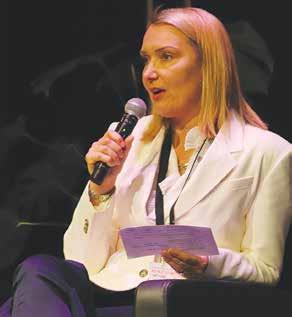
fore lost.
“The number one thing the business community understands is the tariff reduction,
because they don’t have to do anything – just turn up,” she told Rural News.
Salmond says sometimes what looks like a
benefit in an FTA, in the end isn’t really one. Conversely, sometime the opportunities in an FTA are not brought to the attention of the right people in the right way and consequently never get taken up.
“There is a real problem with people speaking different languages. If you have been in trade policy your entire life, you talk in acronyms such as NTBs and FTAs, which is a language that frankly the average businessperson does not understand and gets turned off by the bureaucracy.”
Salmond says ‘Wellington speak’ is not widely understood and a lot of the business community
checked out of engaging a long time ago because of this. She says they see some things in the trade area as just on the margins of their companies and then find themselves missing out on good opportunities She says what the Government and its officials need to do is to engage with industry and translate the message to make it more commercial and action orientated. She believes that a better system of communicating with businesses needs to be adopted. At the moment the plan seems to be to run huis in various towns around the country and see who turns up on the day.
try’s amazing farming and food safety reputation, which underpins our export success”.
Kerr says it’s also a chance to grow leadership, collaborate and rediscover our ambition.
“We encourage our members to contribute their expertise and experiences to shape a regulatory environment that supports innovation and growth while upholding our high standards. Our industry contributes to New Zealand’s economic growth, sustainability efforts, and global competitiveness in the agrifood sector.”










Watch our equipment in action!


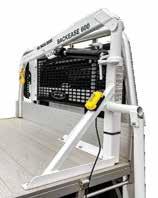





AN AERIAL operation is underway on Chatham Islands to control feral cattle and pigs, responsible for lamb losses, fence damage and feed supply issues.
Funded by the Ministry for Primary Industries (MPI), the six-week operation has culled 5,400 feral cattle to date.
According to Federated Farmers, the everexpanding feral cattle population on Island has caused long term infrastructure damage, feed shortages and damage to unique wetland ecosystems over the years.
Federated Farmers Rotorua/Taupo meat and wool chair Ruby Mulinder looks after the interests of Chatham Island farmers and visits them regularly.
SHIPPING SERVICES between Chatham Islands and the mainland has resumed.
Last month, the vessel Southern Tiare transported a load of sheep and cattle to Timaru.
MPI’s John Roche says It was the first load of livestock to leave the islands since March. The second voyage was loading last week.
“Shipping outages have led to a significant backlog of livestock on the Chatham Islands, including Pitt Island. It’s estimated 24,000 sheep and 7,000 cattle need to be shipped to the mainland,” he told Rural News
The Southern Tiare, operated by Chatham Islands Shipping, is the exclusive sea freight carrier of all export and imported goods to and from the Chatham Islands to mainland New Zealand with regular runs between Waitangi - Pitt Island and Timaru.
Mulinder says MPI’s role in controlling the feral cattle population will also support farmers in achieving more viable farming operations in future.
efforts of the MPI lead cull are not lost.
“It will also be necessary for the island community to implement a long-term strategy to better manage the feral pig population.”
ect on Chatham Island, led by Mulinder, has also sponsored several pig hunting prizes to incentives both total volume and sow culling.

farm support Dr John Roche told Rural News that reducing feral animal numbers enables limited livestock feed on the island to be kept for farmed sheep and cattle and helps reduce damage to fences.
“Supporting the island’s community to reduce pest animal numbers is part of a package to prevent animal welfare issues and improve community safety,” says Roche.
She says this will support the efforts being made by MPI.
“A member of my team has been based on the island recently to provide continued, practical support to farmers,” he says. SUDESH KISSUN
“There is now a need for the domestic cattle herd to be well marked in future to ensure the
“With a basic ear marking or tagging program there will be a marked difference between domestic and any remaining feral stock in future which can be managed proactively.”
A freshwater proj-
Mulinder is also calling for a long-term strategy to better manage the feral pig population on Chatham.
“It will also be necessary for the island community to implement a long-term strategy to better manage the feral pig population.
“They have both recreational and kai values however the current population is excessive. The current population causes
major environmental damage through rooting up soil, damage to fences and livestock losses as pigs will hunt and consume young lambs, some farmers lose 100s of lambs each year. These are serious issues farmers face daily.”
MPI’s director of on
In early May MPI staff, including Roche and other members of the onfarm support team, had practical discussions with local farmers on a range of topics, including feed budgeting and planning.





MANUFACTURERS OF infant formula are largely supportive of a proposed new domestic labelling standard for their products.
Earlier this month, Food Safety Minister Andrew Hoggard announced that New Zealand would opt out of the Australia-New Zealand standard in favour of a modified standard.
Infant Nutrition Council chief executive Jonathan Chew says he understands that the modified standard will, by and large, represent the proposal from FSANZ.
“However, the NZ
standard will have two or three important amendments that seek to keep restrictions on labelling the same as the existing standard; specifically, information which highlights ingredients can continue to be put on the front of the label,” Chew told Rural News
He says this will allow New Zealand parents and caregivers of formula-fed infants to continue to be able to make informed decisions regarding how they feed their children.
“It also means NZ exports do not face additional restrictions compared with infant formula from the EU or US in overseas markets,” says Chew.

Chew says the likely reason why Australia supported the standard where New Zealand did not is because New Zealand exports “significantly more” infant formula than Australia.
“However, there is also concern that in Australia, in an effort to protect and promote breastfeeding, some ministers believe you need to make using formula as unappealing and com-
plicated as possible,” he says.
“Ultimately, we want parents to have sufficient information on the label for them to be able to make informed choices about what’s best for their children,” he adds.
The original standard proposed by Food Safety Australia New Zealand (FSANZ) would see the introduction of new restrictions on the labelling of ingredients within infant formulas.
FSANZ claimed in its Decision Regulation Impact Statement that, currently, labelling and packaging for infant formula products could be misleading for parents and caregivers.
At a meeting of Food Safety Ministers for Australia and New Zealand, Hoggard sought a review of the new labelling requirements. However, this was not supported by his Australian counterparts.
“As a result, we will now implement a New Zealand standard over the next five years,” Hoggard says.
“So long as infant formula is safe and the claims on labels are not misleading, consumers should be allowed to make their own informed choices,” he says.
Hoggard says New Zealand only sought modifications to two parts of the standard in
relation to restrictions on labelling that do not suit the New Zealand context.
“The vast majority of the standard is good and supported by industry,” he says.
Dr Mariana Muelbert, research fellow at the Liggins Institute, part of the University of Auckland, says the decision to opt out of the FSANZ standard is a step in the wrong direction.
She says that, currently, New Zealand only partially complies with the International Code of Marketing of Breastmilk Substitutes (the Code) and the FSANZ proposal would have addressed legislative shortfalls.

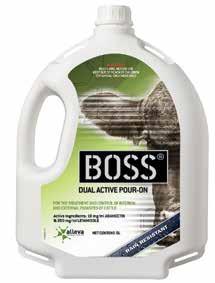



NEW ZEALAND’S leadership on sustainability is the ‘goldmine’ that has to be unlocked, says Silver Fern Farms (SFF) chief executive Dan Boulton. His comments come at a time when the challenges facing the red meat sector are real. Boulton says they affect all parts of the supply chain from on-farm, through to processing and onto customers.
According to Boulton, one way to face the challenges is to spell out very clearly to buyers and customers that NZ is producing high quality sustainable products than our competitors simply can’t match.
Boulton says there have been big shifts in the global supply chain with Australia’s exports of sheepmeat putting pressure on NZ in key markets such as China.
FOR DECADES there have been various iterations of selling the ‘NZ Story’, but Dan Boulton believes that right now this is top of the list if we are to see off our competitors.
The new ‘Origin of Country’ campaign scheduled to kick off in China at the end of the year is one tool that’s been embraced and run by the meat processing companies, with support from B+LNZ.
He says the sustainability practices of our farmers is something our competitors cannot match. And what we do is exactly what our high value consumers want. Boulton says one of the problems is that NZ is being tethered to the commodity cycle, but he notes NZ’s so-called commodity product is of much higher quality than that of South America, for example.
“Our farmers have got the biodiversity and the sustainability practices, and we have got to package it up, take it to the customers and lift the whole commodity market to a new level,” he says.
Boulton says by doing this – backed by hard data and good independent verification programmes, including the NZ farm assurance programme plus – NZ should be able to extract a premium for its commodity products over its competitors.
“We can’t ignore we are in a real pain point at the moment, but I think the mid to long term outlook for producers is really promising,” he says.
“There
is also increased production coming out of South
America and because of the extra volumes of meat on the market,

prices
From a SFF perspective, Boulton says they have invested heavily in
THE DOWNTURN in China continues to impact New Zealand’s red meat exports.
The latest report from the Meat Industry Association (MIA) shows that for the 12 months to June, overall exports were down by 7% to $9.9 billion. China remained the largest market for the year, but exports were down 32% to $2.86b. It accounted for 29% of all exports compared to 39% last year.
But while the Chinese market remains somewhat depressed, the news from other markets, in particu-
lar the US, is good. In the past year, exports to the US increased by 16% to $2.66b, offsetting the soft Chinese market. The next three largest markets were Japan, up 13% to $490 million, the UK, up 45% to $456m, and Canada, up 58% to $370m.
Overall sheepmeat volumes in the past year increased by 3% to 389,509 tonnes, but the weak China market saw value fall 9% to $3.59b. At the same time, volumes to China were down 14% and the value was down 33% to $1.05b.
MIA chief executive Sirma Karape-
eva said that while the China market remains soft, with some recovery expected in 2025, other key markets were seeing positive returns.
“Exports to North America and the UK increased by volume and value with volumes to the EU largely unchanged but value fell by 10%,” she says.
In terms of beef, volumes also increased by 3% to 511,736 tonnes but value fell by 4% to $4.42b, largely due to China. But Karapeeva says this was partly offset by growth into the US, up 30% to $1.74b, Canada up 106% to
$209m, and Japan up 27% to $328m.
“The value of beef exports to the US was also significantly higher than to China and while NZ exported only 9000 tonnes more beef to the US compared to China during the year, the exports to the US were worth $470m more,” she says.
Karapeeva says after a full year of the free trade agreement (FTA) operating, the UK was one of the top 10 beef markets for 2023/24, the ninth largest by volume at 3881 tonnes and eighth largest by value at $48m.
While the China scenario contin-
diverse channels such as retail, e-commerce, wholesale and food service markets. This he says has given them good diversification across our key markets. SFF is also identifying the customers who value NZ products and having the right distribution partners to get to them.
“We want to have a very special relationship with them, which is why we have to be so disciplined in our route to market,” he says.
To that end, Boulton says SFF has invested strongly in brands and teams in key markets to deepen their connection with high value customers.
He says while the Chinese market is currently subdued, SFF still sees it as strategically important and is investing there so it will be well positioned to take advantage of the Chinese recovery.
ues to influence the returns to our farmers, there are some signs in the latest data from June 2024 that other markets are picking up. For example, the US, says Karapeeva, was the most valuable sheepmeat market for the month – the first time this has happened since 2017.
The US imported NZ sheepmeat worth $62m, with China dropping by 39% to $52m. At the same time, while beef exports to China were down 44% to $83m, exports to the US rose 16% to $221m, 101% to Japan to $46m and 112% to Canada to $35m.

BURKE
THERE ARE massive market opportunities for the horticulture sector in southeast Asia, according to Nicola Grigg, the Associate Minister for Horticulture and also Minister of State for Trade, with a focus on southeast Asia.
She’s just back in Parliament after six months on maternity leave but is quickly setting her sights on how to open new markets and expand others for our booming horticulture sector. To that end she is
hoping to visit Laos in the coming months to assess market opportunities for NZ.
She says this is part of her and the Government’s strategy of getting on planes and meeting people in key target countries at all levels to build relationships that will lead to trade. She points to the recent trip by Prime Minister Luxon to the Philippines, Singapore and Malaysia, and the fact that Agriculture Minister Todd McClay and Foreign Affairs Minister Winston Peters are on a plane every couple of weeks. All
this is about relationship building.
While there is much talk that the golden days of ambitious, comprehensive FTA’s such as the one with the UK are over, Grigg believes there are other ways and forums that can produce good outcomes for NZ.
For example, she says there are sectoral relationships and multilateral relationships such as the CPTTP which other nations are excited about joining, and the GCC (Gulf Cooperation Council) which NZ is working on.

vegetable growers
Tangiwai is probably best remembered for the Christmas eve railway disaster in 1953.
Mott’s Premium Produce is renowned for the high-quality parsnips they produce and sell to the Foodstuff supermarket chain around the country. Their property is in the shadow of Mt Ruapehu and on a fine day it provides a fabulous backdrop to their growing operation.
Kandy Mott and her late husband Craig developed the property, but since Craig’s death her son Jeremy and his wife Amy have taken a major role in the business.
As well as the parsnips and swedes, the Motts have been growing a crop of a special variety of beetroot called Chioggia, which is used in the popular Garden Medley crisps put out by the Proper Crisps brand, available in supermarkets.
Amy Mott says that the Nelson-based company “knew that Jeremy is good at growing things,” so asked the Motts to
“While an FTA is a dream outcome, there are many other ways to do trade,” she told Rural News
As far as India is concerned, Grigg says there is a premise that it’s not worth chasing an FTA because of dairy.
“But I say that’s rubbish. We have kiwifruit, apples, education services, genetics and whole range of other goods and services going there and we can do trade with India,” she says.
But to get deals, Grigg says NZ can’t wait for countries to come knocking at the bottom of the Pacific, we need to be constantly banging on doors of potential trading partners.


develop a beetroot that would work with their range of what they describe as “delicious vegan healthy snacks made entirely with real, natural food and seasonings”.
The Motts experimented with several varieties of beetroot, but once they narrowed it down, the decision jumped out at them. The common name of this variety is Candy Stripe, and they felt that sounded close enough to Kandy Mott, general manager of the family business.
Besides the beetroot being an added business arm to the Mott farm, it was a winner for the Proper Crisp company, which says customers raved about the sweet tasting beetroots so much that they have increased the ratio of this vegetable to the packet, which also includes kumara, parsnip and carrot crisps.
The move into the beetroot venture is just another example of the Mott family’s enthusiasm and courage to innovate and a reason for their success.
They operate in challenging times and often in difficult conditions but still produce
quality products which meet the demands of the buyers and the consumers.

AN EXTRACT from the humble daffodil will be put to the test in New Zealand after UK research discovered its potential to cut methane emissions from livestock.
AgriZeroNZ is partnering with Welsh research company Agroceutical Products, which discovered a naturally occurring compound from daffodils, haemanthamine, may be effective in reducing methane production in cattle after conducting lab trials.
The public-private joint venture (JV) is investing up to $4 million to trial the botani-

cal methane-blocker on animals in New Zealand and, if successful, accel-
AGRIZERONZ IS a world-first public-private joint venture focused on helping farmers cut emissions while maintaining their competitive edge.
Established in February 2023, the JV is half owned by the New Zealand Government through the Ministry for Primary Industries and the other half is owned by private sector companies: The a2 Milk Company, ANZ Bank New Zealand, ANZCO, ASB Bank, BNZ, Fonterra, Rabobank, Ravensdown, Silver Fern Farms and Synlait.
Private sector funding is matched by the Govern- ment, dollar-for-dollar, to provide $191 million over AgriZeroNZ’s first four years.
AgriZeroNZ is part of the Government’s Centre for Climate Action on Agricultural Emissions along- side the New Zealand Agricultural Greenhouse Gas Research Centre.

erate its development as a new emissions-cutting tool for Kiwi farmers.
Agroceutical Products is known for its groundbreaking work extracting
naturally occurring compounds from daffodils grown in Welsh mountains, most notably galanthamine, which is used to treat Alzheimer’s disease.
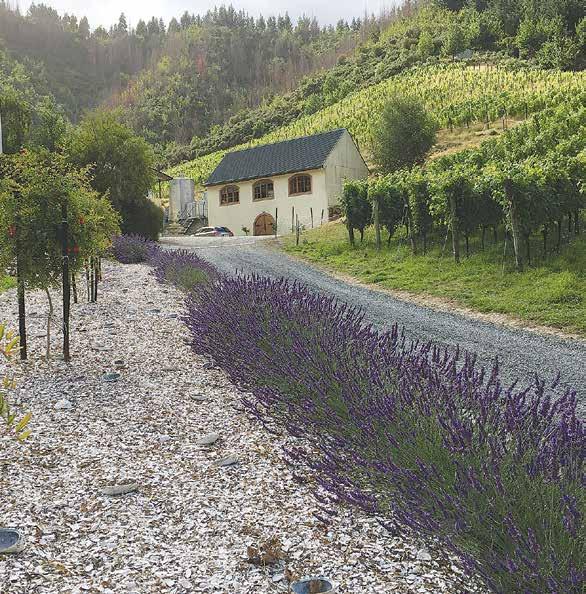

TO PRODUCE these crucial compounds, daffodils need to be grown in challenging, high-altitude environments, like the Black Mountains in Wales.
Given the limitations of the daffodil growing season in the UK, Agroceutical Products has investigated growing locations in the southern hemisphere to provide a yearround supply.
“New Zealand’s rugged hill country provides the prime growing conditions needed for daffodils to produce the compounds we’re looking for,” says Kevin Stephens.



AgriZeroNZ chief executive Wayne McNee says the early-stage investment presents an exciting opportunity to bring the pioneering research to New Zealand, which has the ideal conditions for growing daffodils.
“It’s been widely acknowledged that a technology-led approach is the best way to support farmers to reduce emissions without compromising on profitability.
“We’re scanning the world for cutting-edge tools that could work on New Zealand farms and we’re excited to leverage the knowledge and expertise of Agroceutical Products for the benefit of Kiwi farmers.”
The daffodil’s methane-reducing abilities will be put to the test at Lincoln University where animal trials are planned to take place from February 2025.
Following lab trials conducted on artificial rumens, it’s estimated the daffodil compound could reduce livestock methane emissions by 30% when consumed as a feed additive.
McNee says further development could see
Most recently, Stephens was involved in a trial which found daffodils grown on South Island sheep farms produced commercial concentrations of galanthamine. Stephens, himself a sheep and beef farmer, initially started growing daffodils on his hill country land to diversify the farm’s income. He says he’s pleased to bring that same opportunity to New Zealand farmers.
“Daffodils are easily integrated into sheep farming systems as sheep don’t eat the plants, and simply graze around them.
“The daffodil bulbs can be planted directly into pasture and then harvested for extraction with no significant capital expenditure or damage to surrounding pasture.”
the compound being administered via a slowrelease bolus within the rumen, which would make the tool accessible to a wider range of ruminant animals including sheep, deer and goats.
Agroceutical Products managing director and founder, Kevin Stephens, says he’s looking forward to taking their research to the next step in New Zealand.
“This investment from AgriZeroNZ significantly accelerates our development programme which will ensure the resultant feed additive is available in New Zealand at the earliest available opportunity, all the while providing New Zealand sheep farmers with an opportunity for an additional income through growing daffodils required to produce the additive.”
If successful, McNee said the JV would support Agroceutical Products with any regulatory approval required to enable the daffodil-based inhibitor to be used onfarm.
AgriZeroNZ has committed more than $33 million across a range of emissions reduction tools and technologies for New Zealand farmers including a methane-inhibiting bolus, novel probiotics, low methane pasture and methane vaccines.
“There isn’t going to be a one-size-fits-all approach when it comes to reducing emissions across our agricultural sector, so we’re investing in a range of different tools to give us the best chance of providing our farmers with access to affordable, effective solutions,” McNee says.
and it’s not simplistic”.
THE
DIRECTOR of Otago University’s new virtual Centre for Rural Health says there’s no one, single fix to the burgeoning staffing crisis facing the sector.
Professor Garry Nixon says the declining rural health workforce is “not a new thing”.
“These are very longstanding issues and they are not confined to New Zealand. These are international issues,” Nixon told Rural News He says the sector is aware of what needs to be done, but it’s not a “single intervention, that one part of the pathway,
“You’ve got to deal with it from a whole of systems approach right from taking into medical school and other health professional programmes kids who’ve grown up in rural areas, supporting them with longitudinal attachments during their undergraduate years,” Nixon says.
He says that short attachments don’t work for this form of health.
“You’ve really got to be looking at having them there for many months if not an entire year of their training,” he adds.
Nixon says that crucially, the postgraduate pathways have to be provided for medical

students across all disciplines.
“When you exit medical school, you’re really only halfway there,” he says. “It’s really at that point to a specialist training programme where you really learn
your trade and it’s really important to have rurallybased specialist training programmes.”
“It’s about that whole package, it’s about everything and that’s the strength of this centre because it brings all those

parts together rather than just dealing with one short rotation into a rural area at one point during your training.”
The virtual centre opened late last month in Ashburton, bringing together the dispersed rural staff and students from the University of Otago’s Department of General Practice and Rural Health and the Rural Health Academic Centre, Ashburton (RHACA) under one umbrella.
Currently, the department has 46 staff, straddled across both clinical and academic roles, based in 21 rural communities from the Hokianga to Balclutha. Undergraduate
students are undertaking their studies in rural sites from Wairoa and Queenstown.
The Centre will act as the University’s rural health unit, with the primary purpose of supporting teaching and research across rural New Zealand.
Nixon, a rural doctor at Dunstan Hospital in Clyde and the centre’s director, describes the new centre as an “evolution”.
“When it comes to rural health, I don’t think any one physical site is going to have the critical mass to achieve what you need to achieve in the space, so this is a way of bringing it all together,” he says.
Nixon says the Centre allows staff and students from multiple sites working in similar situations but in different locations to “get to where we need to get”.
“Rural health is no different from any other specialty. It needs its academic activity to support it, to provide the specialist education and training, to provide the research and to provide the leadership which comes out of the senior academic posts to advance it as a discipline,” he says.
“So, it’s really just providing that same level of support that the university provides to other disciplines,” he concludes.

A STALWART of rural journalism, David Anderson, has died at home in Timaru following a prolonged illness.
Until illness forced his retirement earlier this year, David had been working as consulting editor of Rural News, but his career in rural and political roles was long and varied.
Raised on a sheep and beef farm near Timaru, David started his career as a junior reporter with the fledgling Rural News in 1991, freshly graduated from a journalism course – after a period farming, shearing and working in the meat processing industry. Rural News was in the process of changing, with the aim of tackling the real issues affecting the country’s all-important rural
sector, and David’s nose for news was a perfect match.
His first editor, Ron Clark, was a true newspaper man who believed that NZ’s farming sector lacked serious coverage of the issues that it faced, and that Rural News was the perfect outlet to do this. Ron’s hard-hitting and uncompromising approach to news rubbed off on David, who took the same approach over his own career in rural journalism – covering the good, bad and ugly of NZ’s agribusiness sector without fear or favour and ‘keeping the buggers honest’. One headline David liked to recall from those early days, one that nicely sums up the fearless attitude Ron and David shared, was the classic ‘Why bankers are bastards!’
Farmers loved that

one more than the publisher did: the banks wouldn’t advertise with Rural News for years after.
Ironically, David’s rural journalism career began when a new National-led government
was picking up the pieces of a shattered economy and severely depressed rural sector hit by major reforms, in the aftermath of six years of a Labourled government.
It was a rich period of
Mark and Sonia Dillon are fifth-generation Southland farmers and proud of it. They’ve been operating the family’s 380-hectare farm in Riversdale for over 25 years, and farm a total of 1000 hectares on other land either owned or leased. They also contract out to farmers doing ag work including bailing, beet planting and lifting. At the home farm, wild turnip required a lot of management, so when the opportunity arose in 2019 to trial the Conviso® Smart system, they leapt at the opportunity. Mark elaborates:
“Previously, we would have to spray the paddocks four times to control wild turnip. Now we’re just two sprays, so you don’t have to go over the paddock as many times and it just all saves time and diesel and money…”
Better Chemistry – for all.
Sonia likes to call the Conviso Smart system “New Chemistry”. It’s given them the luxury of growing
change for a newsman: farmers were unhappy with the producer boards and the fact they could not even vote directly for their own representatives. They changed the system, believing it would see much better voter turnout and higher quality representation. Fast forward to today, and, as David recently noted, a mere 12% of red meat producers bothered to vote at the latest Beef+Lamb NZ annual meeting.
Another big change David’s career spanned was the painful formation of Fonterra, from the numerous small dairy co-ops dotted throughout the country, into one of the biggest and most successful dairy companies in the world.
Throughout his career, David was committed to putting farmers’ inter-
beet on land where they wouldn’t be able to grow conventional beet.
“It hasn’t had the best husbandry previously. It’s got a real heavy weed loading of bolters and wild turnip and this new chemistry just takes all that weed out,” says Sonia.
She also thinks it’s better for the environment.
“We use less chemicals and it’s even better for the environment not having tractors going over multiple times, which is multiple loads of exhaust going up into the atmosphere – so, it’s way better for us…”
Sonia absolutely recommends Conviso Smart to other farmers, especially if they’re growing in places that maybe conventional beet isn’t really for them due to weed loading
She sums it up nicely: “Conviso saves time and it saves money...”
ests first, taking politicians, business leaders and ‘dark-suited PR types’ to task.
He himself had a few years in a ‘dark suit’ working in communications for Fonterra and, before that, in Bill English’s press team. He also worked as an independent contractor for a few years, helping clients such as the Rural Contractors Association with their media and communications work, and also served as a councillor on the Waimate District Council.
More recently, he managed his brother and National MP Miles Anderson’s successful 2023 campaign for the Waitaki seat.
When he returned to the Rural News editor’s chair a few years back, the Hound’s teeth were sharpened – the ‘woke’
getting savaged. There are too few of David’s kind left in the media industry – old school journalists chasing the story, not virtue signalling – and he has left an indelible mark on rural journalism. He will be missed.
To quote David’s final editorial: “It is impossible to summarise more than 30 years of this dynamic sector’s events and happenings in a few words. However, what I can say is that things will continue to change, farmers will adapt, and the industry will survive and thrive. It’s been an absolute privilege to have played a small role in NZ’s most important and vibrant sector.”
David Anderson’s funeral was held in Timaru, attended by family, friends and colleagues.


RABOBANK NEW Zealand has appointed the bank’s global chief compliance officer Angelique Meddeler to its board.
Announcing the new appointment, Rabobank New Zealand chair Chris Black says Meddeler’s extensive experience in international banking across a diverse range of roles – coupled with her strong knowledge of the “regulatory landscape” – made her an ideal fit for the board.
Meddeler, who is based in Utrecht in the Netherlands, has 30 years’ experience in global retail and wholesale banking and joined Rabobank in December 2021 in the role of chief compliance officer.
She had previously spent more than 25 years with ING Bank, serving in a wide range of roles including Global FEC/AML (financial economic crime/antimoney laundering) lead for ING retail and wholesale worldwide, global head client services wholesale banking, head of international business clients and head of marketing retail/business clients.
Part of the global co-operative Rabobank Group, Rabobank NZ is one of the country’s agricultural banks and a major provider of corporate and business banking services to the food and agribusiness sectors. It also operates online retail savings and deposits business Rabobank Online Savings. In addition to chair Chris Black, Meddeler joins other directors of Rabobank NZ – Tim Deane, Brent Goldsack, Geerten Battjes and Rabobank regional manager for Australia & New Zealand, Mark Wiessing.
THE NEW chairman of state farmer Landcorp
(Pāmu) John Rae says the business is a unique asset.
Rae says as well as being focused on farming excellence and driving improved financial performance, there is potential for the organisation to play a greater role in making a real difference for New Zealand.
“This includes developing farm system solutions that help agriculture’s transition to meet the evolving expectations of consumers, society, and regulators.”
Rae was appointed earlier this month and replaces Dr Warren Parker who passed away in December last year.
He is chairman of Gisborne Holdings Ltd, Te Rāhui Herenga Waka Whakatāne,

Abodo Wood Ltd, Thos. Corson Holdings Ltd, Crown Regional Holdings Ltd and director of Bremworth Ltd, and Midland Fund Management Ltd, and has previously held a wide range of directorships
including as a foundation member of the Provincial Growth Fund.
Alongside Rae, the Government has also appointed Sarah Petterson as a director.
Pāmu chief executive Mark Leslie says it’s
great to have these appointments confirmed “so we can move forward confidently and in a clear direction”.
“I’ve already spoken to Rae about the focus Pāmu has on enhanced performance and the strategic role Pāmu plays within the New Zealand farming sector and the opportunity for the company to work across government and in partnership with the agriculture sector for the benefit New Zealand Inc.”
Acting chair Nigel Atherfold says that Rae comes to Pāmu with solid experience in the rural sector and a sound understanding of the opportunities and challenges Pāmu faces.
“He has a strong commercial background that will support the Pāmu strategy and the team’s increased focus
on performance,” says Atherfold.
“Sarah Paterson has a background in agricultural and trade policy, with a focus on the primary industries, and works on strategic projects across the dairy, red meat and horticulture sectors. I am delighted to welcome both John and Sarah to the board and look forward to working with them,” Atherfold says.
Paterson is a director of Blue Circle Consulting Ltd, the New Zealand Meat Board, Kiwifruit New Zealand, New Zealand Trade and Enterprise, and InterWeave Ltd. She is also an independent board member of the Army Leadership Board and co-founder of Global Trade Insights.




IT’S TIME for the Government to step in and resolve the migrant worker visa issue for the dairy sector, once and for all.
The ‘band-aid’ solution of extending priority processing of visas is simply bringing no joy to farmers in desperate need of staff for calving, nor to experienced and eager workers ready to help with calving on NZ dairy farms.
According to Federated Farmers, the dairy sector needs up to 1000 workers for calving season now underway. However, it’s taking up to six months for Immigration NZ to process visas.
Federated Farmers has been working closely with the Minister of Immigration and INZ to try and find solutions to alleviate some of the pressure short-staffed farmers are under and prevent any animal welfare issues during calving.
Last week, farmers got some relief. Immigration Minister Erica Stanford agreed to some limited exceptions for existing visa applications, where the applicant is already onshore, to facilitate them being on farm as soon as possible.
The Minister has also agreed to extend priority processing for dairy farm worker and dairy farmer visa applications until 1 September, which should at least see farmers through the bulk of South Island calving. But it only relieves some of the short-term pressure this season, and it’s only a band-aid solution.
The time has come for the Government to address some of the bigger, longer-term challenges with the immigration system.
For starters, the accredited employer scheme is a shambles.
Farmers pay to become accredited employers; it’s a time-tested process and farmers must have a long history of being good employers and keep good records. But it’s still taking farmers four to five months to get a visa for overseas workers.
If the Government doesn’t fix these challenges over the next 12 months, farmers will find themselves back in the exact same situation next season.
HEAD OFFICE POSTAL ADDRESS:
PO Box 331100, Takapuna, Auckland 0740
Phone 09-307 0399
PUBLISHER: Brian Hight Ph 09 307 0399
GENERAL MANAGER: Adam Fricker Ph 021-842 226
EDITOR: Sudesh Kissun Ph 021-963 177 sudeshk@ruralnews.co.nz
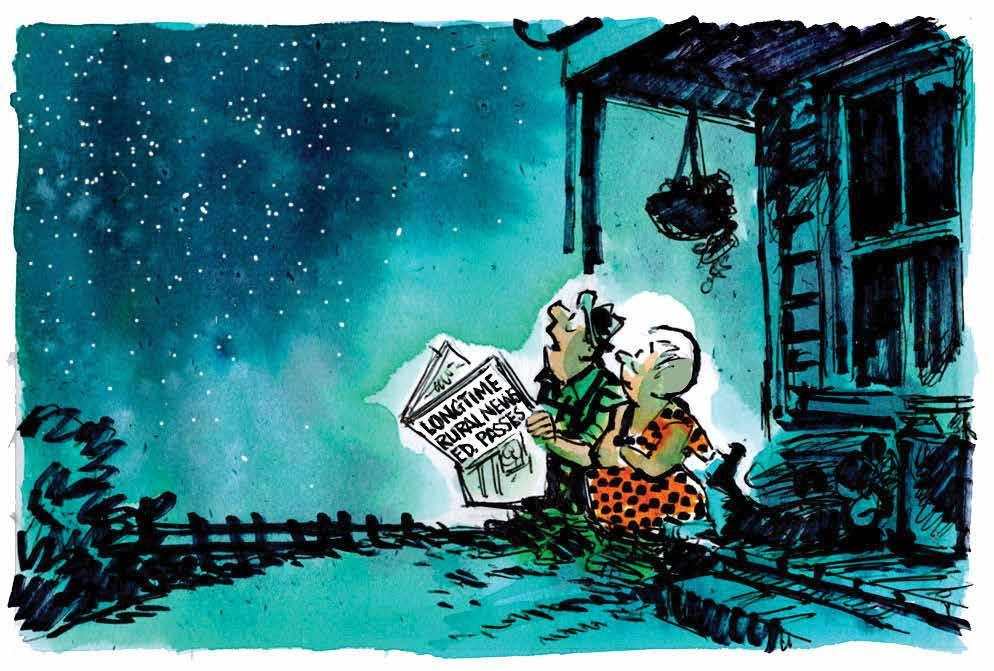
THIS OLD mutt reckons the latest red meat export numbers bring to mind the old maxim, “When China sneezes, the world catches a cold”. Certainly, it’s lower demand from China that’s holding back a recovery to full health in meat industry returns, which had been decidedly sick until recently. MIA data shows positive growth overall in June, driven by the US, up 14% to $303m, Japan up 53% to $61m, the UK up 66% to $61m and Canada, up 94% to $51m. China, still the second largest market after the US, was down 38% to $176m –dragging the June average back to a 2% increase overall. Same deal with second quarter red meat exports, down 1% to $2.9b despite all major markets boosting volumes, except China, which was down a whopping 40%.

MOST OF the country’s wage slaves will welcome the extra coin left in their wallets thanks to National’s tax cuts. While some reckon that the extra – an average $24 per week – only compensates for half of the ‘fiscal drag’ of years of inflation pushing workers into higher tax brackets, in tough times, an extra Tux in the dog bowl isn’t to be sniffed at. And as for the critics of the cuts – lefties and Labour proxies masquerading as ‘concerned citizens’ – who have been disingenuously and grandly declaring “we don’t even want or need the tax cut”, your old mate has a simple solution – give it back! There’s a Treasury bank account available for receiving donations, but the Hound doubts they’ll be overrun with donations from these ‘tax is love’ hypocrites.
PRODUCTION: David Ferguson Ph 027 272 5372 davef@ruralnews.co.nz
Becky Williams Ph 021 100 4381 beckyw@ruralnews.co.nz
REPORTERS: Peter Burke Ph 021 224 2184 peterb@ruralnews.co.nz
Nigel Malthus Ph 021-164 4258
MACHINERY EDITOR: Mark Daniel Ph 021 906 723 markd@ruralnews.co.nz
RURAL SERVICES such as banks, health and postal services have been declining for years, so this mutt was tickled pink to hear Rural Women NZ on national TV slamming the impact of post office closures in rural areas. Your old mate has worried about the decline in this vital service for years now, including reduced delivery days for RD drivers, and regular hikes in the RD rates, making the RD ‘channel’ to farms less viable every year. RWNZ’s attitude to this is a huge step up on the Feds CEO who, when asked a couple of years back by a mate of yours truly to advocate against the RD rate hikes for rural users, responded with surprising indifference, saying, “Well, NZ Post are overdue for a rate increase”.
AUCKLAND SALES CONTACT: Stephen Pollard Ph 021 963 166 stephenp@ruralnews.co.nz
WAIKATO & WELLINGTON SALES
CONTACT: Lisa Wise Ph 027 369 9218 lisaw@ruralnews.co.nz
Want to share your opinion or gossip with the Hound? Send your emails to: hound@ruralnews.co.nz
IF YOU’RE wondering where the extreme rhetoric of the Maori Party, with tacit approval from our chinless media, leads us to, the Hound reckons New Plymouth councillor Murray Chong could probably give you a clue. His longstanding, consistent opposition to the introduction of Maori wards was well known, and it was his democratic right as an elected representative of citizens in his region to abstain on a recent vote about whether or not the council should retain its Maori ward. Some idiot, no doubt emboldened by the Maori Party’s divisive ‘genocide’ rhetoric, which media give a free pass to, didn’t think he had that right and shot at this car, outside his home. Sticks and stones will break our bones, but words will never hurt us? An air rifle will though.
SOUTH ISLAND SALES CONTACT: Kaye Sutherland Ph 021 221 1994 kayes@ruralnews.co.nz
DIGITAL STRATEGIST: Jessica Marshall Ph 021 0232 6446


THE OTAGO Regional Council needs to be honest about what the new proposed freshwater rules might mean for our community and how much it could cost local ratepayers.
Since the release of draft regulations there have been significant changes made, but because of the secretive nature of the consultation process the community is completely in the dark.
This is serious stuff and there needs to be some urgency. The rules are scheduled to come into force in October and will have immediate legal effect.
Our local councils need to front up and let our community know how they plan to give effect to Te Mana o te Wai and how much it’s going to cost us.
Confidential information provided to Federated Farmers suggests the costs will be more than $110 million for just two small Otago towns –equating to more than $50,000 per ratepayer.
If similar costs can be expected across the rest of Otago, we’re talking about a multi-billiondollar spend for the region that will have huge financial implications for residents.
The regional council needs to urgently confirm whether these cost projections are accurate. If they’re not, they need to front up with the real figures, fast.
Federated Farmers are incredibly concerned about how the principle of Te Mana o te Wai may be applied in the Otago region and what it might mean for our community.
We understand that council engagement has led to a view that that no treated wastewater that has passed through a human body can be discharged back into local waterways. This would mean that wastewater, despite being treated to an incredibly high
standard, would need to be discharged to land at significant cost to ratepayers.
There are also significant concerns for irrigated farmers that water that has been drawn from one waterway will not be able to be discharged into another.
This is because of beliefs that each water body has a distinct mauri, or spirit, and mixing mauri would reduce the mana of the water.
While we are respectful of our local Iwi and Māori cultural beliefs, these kinds of interpretations will have huge costs and consequences for the region.
Neither of these requirements, or their associated costs which range into the billions, have anything to do with improving the scientific health of local waterways.
They’re all about improving the cultural and spiritual needs of the waterways but given the huge implications I think we need to have a more transparent conversation.
We note that 82% of Otago’s local waterways are already swimmable.
The consultation from Otago Regional Council has been woefully insufficient given the serious implications potential costs of these regulations.
The current national direction requires the regional council to engage with both the local community and tangata whenua to determine how Te Mana o te Wai should be applied locally.
While they’ve quite rightly engaged with local Iwi, the wider local community have not had a sufficient opportunity to feed into the process.
We have asked the council to share the naturally occurring levels of sediment in Otago so that farmers and foresters can manage their contributions to sediment in waterways.
In many cases across New Zealand, sediment
bottom lines are below those achievable even if a catchment was in its natural state.
Disappointingly, we have not had any response.
• Luke Kane is Federated Farmers Otago president.





IN MARCH this year,
Defra (the UK Government Department of Environment, Food and Rural Affairs) published the national statistics for farm business income. The figures indicate that most farms make more money from support mechanisms and ‘diversification out of agriculture’ than they do from food production.
For livestock grazing, the agricultural part of the equation is negative – it is the basic payment scheme and the ‘Agrienvironment and other payments’ that keep the households afloat.
No wonder, then, that the British farmers are wary about free trade deals with other countries. No wonder that they are extremely concerned about what the

new Labour Government will do about the subsidies.
The UK is not in the European common agricultural policy and since Brexit, farmers no longer receive payments directly linked to how much land they manage. Rishi Sunak’s government had committed to spending £2.4bn a year in England on payments for farmers. These were mostly linked to environmental improvements made on


their land and replaced area-based payments. Historically, farmers feel that they have tended to do better under Labour than Conservative governments. This time, they aren’t holding their breath.
Analysis of the political manifestos shows why.
Labour, unlike the other two main parties (Conservative and Liberal Democrats) did not have a clear commitment to a budget that underpins sustainable domestic food production, delivers for the environment and supports all land tenures. Nor did they appear to have any angle on domestic food security and proportion of food grown in the UK.
In contrast, New Zealand does not have support payments (unless in drought or flood) and focuses more on the amount of food exported than imported. Domestic food security is a moot point. We rate relatively highly in the global food security index (15th of 113 countries and score 100% in having food safety net programmes, as does UK), but media portray a

different story.
UK Labour also didn’t have a plan to invest in agricultural technology and innovation centres, whereas New Zealand’s Government did create and provide co-funding for the initiative now called AgriZero.
In both countries, farmers are worried about economic viability.
In both countries, farmers can point to maintenance of iconic countryside and biodiversity as part of their work (in the UK farmers have been paid for maintenance whereas in New Zealand it is simply what
we do).
In both countries people are complaining about escalation of food prices.
This is the dilemma for governments – in the UK the balance is between payments to farmers and keeping taxes to societies down, whereas in NZ it is the licence to operate versus allowing efficiencies in agriculture (preferably while reducing non-productive paperwork).
In both countries, people in power are trying to identify the best path forward for their areas of activity. In the
UK there is a proliferation of advisory groups, including a website dedicated to showing how they all interact. In New Zealand the Interdepartmental Executive Board for Climate Change ensure information flow between ministries.
Early indications are that progress is being made. The Second Emissions Reduction Plan, currently out for consultation, includes the statement in the Technical Annex that “Production is assumed not to be affected by agricultural emissions pricing”.
This is, at last, an
acknowledgement of the Paris Agreement and ‘countries should do everything they can to reduce greenhouse gases without compromising food production’.
It indicates a concern for global food availability, not just domestic food security.
With our excellent GHG credentials for high quality protein production (meat and milk), the global concern could be part of our marketing advantage.
Time will tell, as it will in the UK. In the meantime, farmers in both countries need a voice in government’s ear. NFU, Federated Farmers, industry, levy bodies – all play a part and do what no farmer can do alone. All are supporting farmers in the goal of economic viability. Global food security depends upon success.
• Dr Jacqueline Rowarth, Adjunct Professor Lincoln University, is a director on the board of governance of DairyNZ, Ravensdown and Deer Industry New Zealand. She remains in touch with farmers in the UK, after emigrating to New Zealand.
Tailor-made for the 60 plus traveller
Calgary Stampede & The Rocky Mountains
Jul 5th, 2025, 16 Days
Embark on a 16-day adventure through the heart of Canada's stunning landscapes and vibrant culture. Experience the thrill of the Calgary Stampede - world-class rodeo action and the Chuckwagon event.
Indulge in luxury aboard the Rocky Mountaineer Train from Banff to Vancouver, passing through the majestic Continental Divide. Discover the natural Fully Escorted Tours



Don’t put good fertiliser on compacted soil which can’t absorb it. If your soil can’t support 15cm root growth and good worm population check for compaction. You could need aeration. In dollar terms, what would 20% production increase mean to your yearly turnover?

YOUR GREATEST ASSET IS THE SOIL YOU FARM. DON’T DESTROY IT!

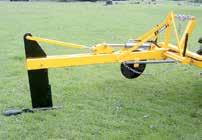


■ Variable speed from 2600-3500 rpm.
■ Latest brushless motor technology means minimal heat build up
■ 1400gms means 100-200gms lighter than standard handpiece.
■ At 2800 rpm the 12-volt lithium battery will crutch 300-400 sheep or trim up to 400-500 cow’s tails.
■


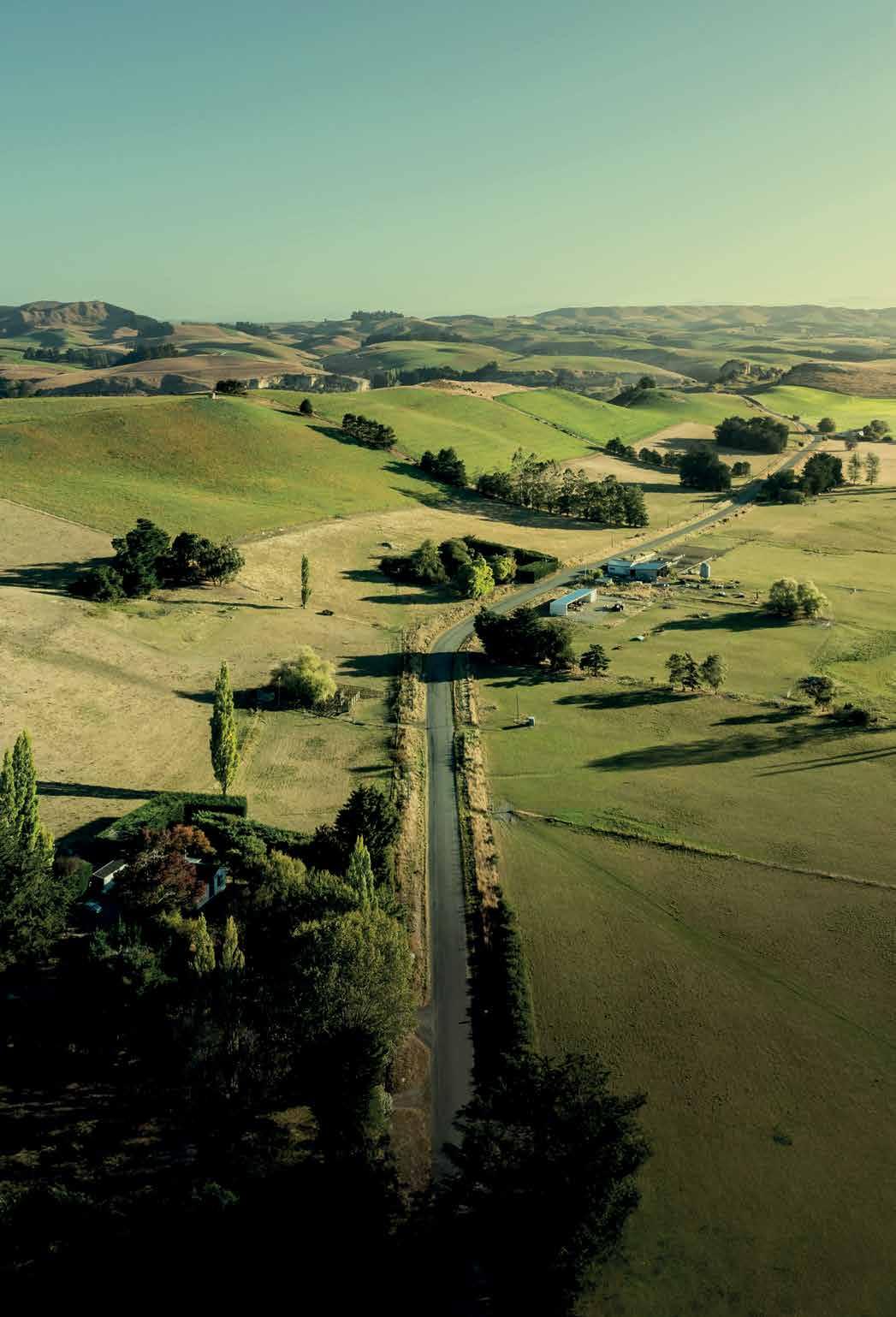
SOME TYPES of pasture may better reduce nitrogen leaching on New Zealand dairy farms than plantain, a major new science review concludes.
It recommends future research into pasturebased N-mitigation tools focus on other plant species which share plantain’s lower dry matter content but grow more feed, especially during the cool season, last longer and are easier to manage.
Authored by a team of leading pasture scientists across both academia and industry, the review has just been published in the NZ Journal of Agricultural Research and examines 15 years of plantain research in NZ.

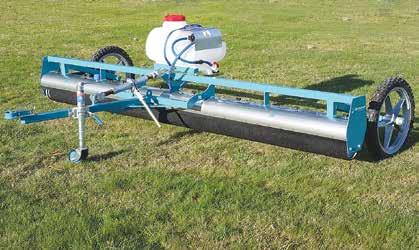

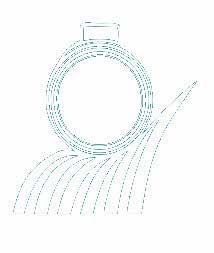

“We propose that the current recommendations around the use of plantain should be reexamined, and that opportunities presented by alternative forage species and pasture management practices should be investigated.”
It finds little evidence that a visual presence of 30% plantain in pastures will beneficially reduce N leaching, and says higher levels of plantain accentuate pasture management problems.
“We propose that the current recommendations around the use of plantain should be re-examined, and that opportunities presented by alternative forage species and pasture management practices should be investigated to provide alternative approaches,” the authors say.
They highlight chicory and tetraploid hybrid ryegrass as two key alternative forages that merit further study for N-mitigation.
These could have a similar effect on N leaching and be easier to deploy at scale than plantain, with higher yield, better persistence and higher cow intake.
Review co-author Dr Tony
Conner, Lincoln
Genetics Ltd, is a plant geneticist and former manager of forage science at AgResearch, with a long career in applied plant science in NZ.
He believes forages other than plantain have not been adequately studied for their potential value as N-mitigation tools on NZ dairy farms.
“Clearly plantain increases animal urination, and we suspect that’s because it has a relatively high water content. Obviously if the animal is taking in more liquid, it urinates more.
“But there are other forages with a higher water content than diploid perennial ryegrass that might perform equally as well as plantain, including chicory and tetraploid hybrid ryegrasses, and I don’t believe these have been considered enough, given that plantain does not perform well in pastures.”
Conner says the new review of all the research

done on plantain so far can benefit both scientists and farmers seeking future solutions to one of the most pressing environmental challenges facing the NZ dairy industry.
For scientists, the review highlights opportunities for improved experimental design of field trials such as those used to support claims of plantain’s effect on N leaching. The review found many research studies supporting the beneficial impact of plantain do not stand up against scientific scrutiny associated with methodology, and data interpretation.
“Controlled field experiments are inherently very difficult to do. They are affected by many co-related factors and different variables, and some of the results can be ambiguous and difficult to interpret,” Dr Conner says.
“I would like scientists to think carefully about their experimental design
for these kind of field experiments, with appropriate control treatments in place, as well as considering alternatives to plantain.”
For farmers, the review is a chance to take a second look at N-mitigation strategies.
“They’re caught in the middle here, because there’s been a lot of publicity about plantain, and the data is very hard to dissect. I’m hoping this will raise some questions in farmers’ minds,” says Conner.
‘An examination of the ability of plantain (Plantago lanceolata L) to mitigate nitrogen leaching from pasture systems’ has been authored by Dr Colin Eady, Barenbrug; Dr Conner; Adjunct Professor Jacqueline Rowarth, Lincoln University; Dr Graeme Coles, Victoria University; Dr Matthew Deighton, Cropmark Seeds, and Professor Derrick Moot, Lincoln University.
https://www.tandfonline.
AS DRONES get bigger, broadacre applications like arable spraying will become more common, says the Canterburybased founder of Drone Spray, Jono Scott.
“Drone spraying is on the rise across all sectors and agriculture is no exception.”
Drone Spray carried out a demonstration for arable growers in an event organised by a Foundation for Arable Research grower group focused on future proofing farm systems. Held at the Dunsandel rugby grounds, its goalposts, sports floodlights and surrounding hedge were no obstacle for the flying drone.
Scott says that arable applications are increasing as drones get bigger and more efficient. His XAG P100 Pro drone, built specifically for
spraying and seeding, has a 50-litre tank and can cover up to 14 hectares an hour. In comparison, when he started his business two-and-a-half years ago, his first drone had a 16-litre tank.
“Lower water rates are a key factor to the efficiency of spraying by drone. For some applications we can spray as low as 25% of the water rate of a helicopter operator. This is due to the even droplet size of the atomising spray nozzles and precise, even application.”
In future, he expects drones and their capacity to get bigger as batteries improve. Drones will also incorporate more smart technology for applications such as spot spraying of weeds.
While arable farmers will continue to use ground spraying rigs,

drones provide an alternative for aerial spraying.
Spraying by drone has strong advantages in paddocks with hedges, trees and high wires or when crop or land damage is best avoided. Drones can also be used at night.
“It is a similar pricing to a helicopter, but more accurate, particularly around the edges,”
While wind can be an issue, similar to other spraying applications, drone operators have ways to limit drift on the boundaries, such as going slower, flying lower and increasing droplet size.
Before a job is started, an automated flight path is prepared for the drone which sets a pre-planned
Improve the overall performance of your knockdown herbicide including the speed of burndown with Hammer ® Force.
• Fast acting: Faster burndown than glyphosate applied alone
• Enhanced control: Helps improve overall control on tough broadleaf weeds such as Mallow
• Non Residual: Nil grazing or drilling withholding period, no additional restrictions to the use of glyphosate
route, boundary limits and no-go areas around any obstacles. Parameters like height, width, speed and nozzle spray settings can be adjusted during flight.
Drones used by Christchurch-based Scott and his Methven-based colleague Scott Rix can spray a width of five to eight metres, depend-
ing on the height that the drone is operating. The drones operate at a height of around 3m for general crop spraying and around 5m on hilly terrain for woody weeds such as gorse and wilding pines, and roof spraying. The strong downwash from the propeller blades ensures all the spray reaches the target area.
A spreading and seeding attachment is available for slug baiting, spreading and hill seeding. FAR technology manager Chris Smith says that drones offer another tool in the application toolbox and are particularly useful in areas that are challenging for a ground sprayer, but adds there are issues to consider.
“While drones have their place and are becoming a commonly used method of applica-
tion, they may require changes to application rates, which in turn may impact on agchem efficacy and the risk of resistance in pathogen, pest and weed populations.
“Currently, chemical labels are unable to keep up with technology.”
FAR is planning to explore the use of drones for spraying at its Future Farms Systems demonstration site at Chertsey to reduce vehicle use. A drone will be used on one half of the site adopting a more experimental future-focused approach, while a ground-based boom sprayer will continue to be used on the best practice conventional arable side. Water sensitive paper will be used to analyse differences in spray coverage. Agchem efficacy will also be monitored where possible, Smith says.

MSD ANIMAL Health
has launched its comprehensive milk monitoring solution, under the SenseHub Dairy brand, for herringbone sheds following successful trials on Fonterra’s Te Rapa dairy farm in the Waikato.
The company says SenseHub Dairy MilkPlus and somatic cell count (SCC) in-line sensors will redefine herd management for herringbone shed owners, who make up 67% of all milking sheds in New Zealand.
Similar technology has been available for rotary systems through MSD Animal Health’s Protrack brand but correctly identifying each cow in a herringbone shed has not been previously possible, says Pauline Calvert, MSD Animal Health livestock business unit manager, New Zealand.
“Cows can be quite cheeky in a herringbone shed, often jostling for their preferred milking position after entering the platform, making it challenging to accurately match the correct cow to the correct bail and thus the correct milk sensor results. Our team has worked tirelessly to overcome these obstacles, maximising the accuracy of data matching and collation, and presenting it in easy-to-use, cloudbased software,” says Calvert.
The Herringbone system uses SenseHub Dairy photoelectric sensors placed above a purpose-built platform entrance chute. If a cow changes position after they enter the chute, SenseHub Dairy software enables the milker to reorder or rematch the cow to the correct bail.
SenseHub Dairy Milk-

Plus allows farmers to monitor yield, protein, fat, lactose, blood, and conductivity for each cow, and the SenseHub Dairy SCC in-line sensors automatically perform a Rapid Mastitis Test (RMT) providing results within two minutes of cupping.
“SenseHub Dairy MilkPlus and SCC in-
line sensors give farmers hard data for every milking, so they know their best and worst performers throughout the entire season for better breeding, feeding, and culling decisions. It also means they can make faster, more informed bulk milk protection, udder health, and dry-off decisions,” says Calvert.
The system also uses a traffic light indicator based on the SCC level by showing green for no issues (low SCC), orange for may need attention, and red for an issue (very high SCC).
Chloe Jones, Fonterra Regional Farm operations manager – Upper North Island, says the trial at Fonterra’s Te Rapa dairy
farm helped them identify and improve mastitis treatment in the 180-cow herd and reduce their mastitis cases.
The farm milks 180 cows over 70 hectares, producing an average of 82,000 kgMS per season.
“As the cows are milking, the team can look up and get a visual read on any cow needing attention through the light system. If they look up and see an orange light, it’s an indication that cow might have a bit of an infection coming on and it means we can take immediate preventative measures to sooth inflammation, aid natural healing or giving her extra care,” says Jones.
“If it’s red, this allows the team to identify the cow on the spot that has high SCC that day and make a decision for treatment or removal of the animal from the vat. As
we have a big focus on milk quality and aim for 100% Te Tihi within CoOperative Difference, this system is helping us to achieve our goals,” says Chloe.
Using the system after calving, the farm had a 55% reduction in clinical cases (5 clinical cases for this season) and was able to monitor and proactively manage 15 cows throughout the season without needing to treat them or strip the herd once.
“Thanks to the sensitivity of the sensors and early detection of any change in bulk SCC, we were able to take our observations to the next level assisting the team in keeping our SCC low and below the 150,000 threshold target we have for the farm throughout the season,” says Alge du Plessis, assistant farm manager




AS A sign of the times, a sharp downturn in the global demand for tractors and machinery has seen some of the global players announcing lacklustre half yearly results.
AGCO, the parent company of Fendt, Massey Ferguson and Valtra, has reported net sales of around US$6.2 billion, a decrease of 13.7% on the same six months in 2023. This result is on the back of a 12.1% downturn in the first three months of the year, meaning the second quarter, with sales of US$3.2 billion was down 15.1% compared to 2023.
The company says the result paints a picture of weakening market conditions and significant production cuts, the latter to
help reduce the company’s and dealer inventories. They also note that declines in commodity prices and subsequently reduced farm income has tempered farmer sentiment, further reducing global demand.
A spokesman for the company commented, “In the first half of 2024, retail tractor industry demand fell by an average of 8.0% across the three major regions of North America, South America and Europe.” In Western Europe, retail tractor sales decreased 5.0% during the first half of 2024, while growth in Germany, Turkey and France was offset by reduced sales across all other European markets – the weakest conditions eventuating in Italy, the UK and Scandinavia. Looking ahead, AGCO

expects demand to soften for the rest of 2024, with a full year of net sales at around US$12.5 billion.
In the blue and maroon tractor camp, CNH Industrial is blaming lower demand for the 16% drop in net sales in its second three months

FOLLOWING A quarter century of production, the 100,000th Fendt 700 Vario was recently driven off the production line in Marktoberdorf, Germany.
The first Favorit 700 Vario was presented to journalists in late August 1998, and two days later to the public at the Fendt Saaten-Union field day in Wadenbrunn.
The second Fendt series to use the Vario transmission, more than 10,000 of the first generation were built, with evolution seeing the Favorit name being dropped in 2003, and the new Tractor Management System (TMS), which controlled the engine and transmission, being introduced on the second generation.
The arrival of the third generation brought with it track guidance and a fully automated guidance system which allowed precision field work. The fourth generation introduced buyers to the curved VisioPlus cab and a multifunctional armrest, then fast forward to the sixth generation that delivered the FendtONE operating system.
A Gen7 728 Vario, sporting the 100,000th anniversary logos, currently sits at the Fendt Forum visitor centre in Marktoberdorf. The milestone tractor will spend the coming months touring trade fairs in France, Italy and other European countries.
of this year to US$5.49 billion. While Agriculture – Case IH, New Holland and Steyr – delivered the largest share of the total at US$3.91 billion, the figure was 20% lower than the US$4.89 billion in 2023.
Industry volume was
down 11% year on year for tractors under 140hp in North America, but up 2% for 140hp+ tractors. The combine market was down 5%, South American tractor demand was down 10% and combines was down 26%, while by contrast, Asia Pacific trac-
tor sales were up 1% and combines demand up 4%. Again, looking ahead, forecasts suggest weaker demand, with agricultural machinery net sales likely to be down by 15% to 20%.
On the machinery front, Kuhn Group
net sales in the first six months of this year fell to around €733 million, a fall of around 17%. Kuhn Group parent company Bucher Industries says lower prices for agricultural products, higher interest rates and fewer subsidies continue to make farmers cautious in terms of investment. Like the tractor sector, inventories of machinery in the dealer network remains high, leading to lower demand in all regions, especially in Brazil, Europe and North America. For the second half of the year, expected demand will continue to be affected by the volatile environment. Overall, Kuhn Group expects sales to decrease and the operating profit margin to be lower.
@rural_news facebook.com/ruralnews

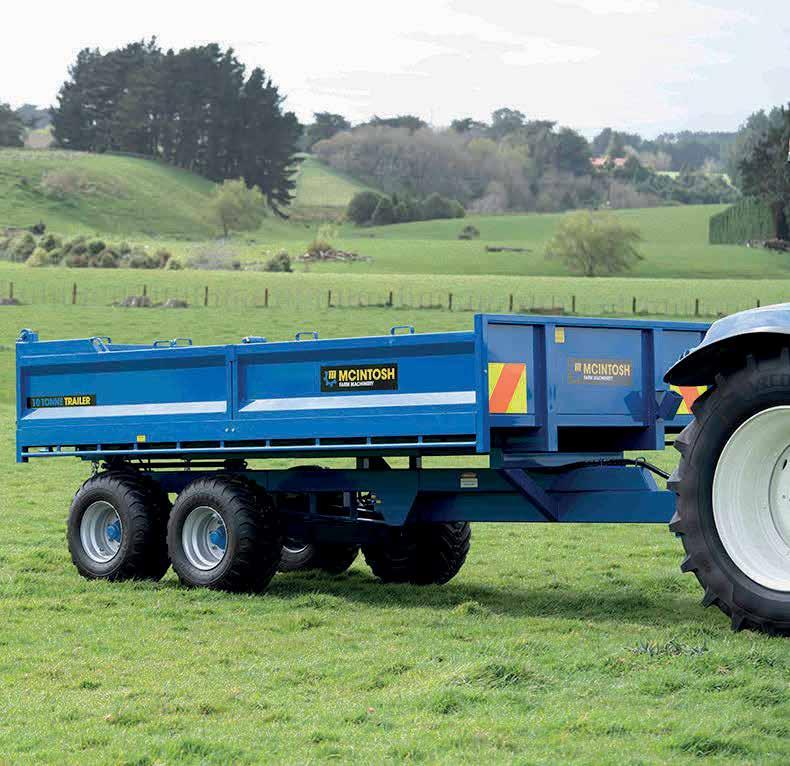



JOHN DEERE’S 6M
Series tractors have been given a major update for
•
2025 with more speed and power across the 13-model range and, for the first time, will include four models above 200hp and a 50km/h transmission.



John Deere production systems manager Stepha nie Gersekowski said the update will give custom ers never-before-seen cus tomisation to create the ideal mid-size utility trac tor.
“The new 2025-year 6M builds on its repu tation as the ready-foranything workhorse of the farm by adding more optionality, so our cus tomers can build the trac tor that perfectly matches the unique needs of their operation.
“We have now taken some of the key features speed for transportation with the new option of 50km/h transmissions,” says Gersekowski.

and 9R tractors, which display the series separately from the rated engine horsepower.

An update in the styling department sees a refresh that includes a new flag design and louvre shape, while the name and numbering format have been aligned with the 6R, 7R, 8R
The new 6M will be available in five frame sizes and thirteen models ranging from 95hp to 250hp, with four models of 200hp and above.
In addition, Intelligent Power Manage-
6M 140 Tier 2 models. IPM offers a 20hp boost for many operations that use rear power take-off (PTO) in high-power applications or transport.
Based on customer feedback, the new 6M now offers 50km/h capability in the AutoQuad, CommandQuad and AutoPowr IVT Transmis-
sions. In addition, AutoPowr IVT has also been extended to all 6M tractors, apart from the 6MH and the Tier 2 models, allowing operators seamless speed changes from creeper speeds to as high as 50km/h during transport.
Other features of the new 6M include a sloped hood design on the 6M 95, 6M 105 and 6M 125 for excellent visibility and manoeuvrability, making them ideal for front end loader operations. The tractors are available with single or dual rear wheels and with larger tyre options, for better traction.
Optional reversible fan technology helps to quickly clean radiator screens from the comfort of the cab, while the Cornerpost display features instrumentation, integrated connectivity and scalable precision technology.
